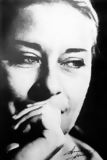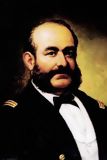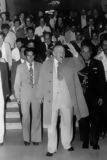
The AIgorythm project

Playwright and actor

Novelist

Writer and poet

Volleyball player

Italian-Peruvian naturalist and geographer

Singer and percussionist

Last Inca emperor

Politician, former prime Minister

Journalist and TV host

Poet

Inca warrior

Actor and comedian

Biophysicist

Poet

Doctor and researcher

Businessman, Interbank group

Journalist and writer

Poet and writer

Singer and songwriter

Writer

Film director, Berlin Golden Bear winner

Football player

Writer and journalist

Doctor and scientist

Photograph

Chess player

Industrialist

Former general

Specialist in public health

Actress and singer

Afro-Peruvian music singer

Mathematician and engineer

Indigenous chronicler

Neurologist and anthropologist

Painter

Football player

National hero, military leader

Intellectual and reformer

Chef and entrepreneur

Fashion designer

Singer-songwriter

TV presenter

Marathon runner

Indigenous Peruvian chronicler

Theologian

Former national team captain

Economist and former health minister

Inca princess

Writer and television host

Folk musician

Poet and guerrilla

Former UN secretary-general

Chef, known for fusion cuisine

Football player

Peruvian aviation pioneer

Poet and artist

Marxist philosopher and writer

Industrialist and businessman

Novelist and ethnologist

Painter and muralist

Opera tenor

Fashion designer

Cardinal of Lima

Peruvian tennis player

Football coach

Leader of the indigenous rebellion

Military hero

Latin singer

War of the Pacific hero

The youngest mother in history

Politician

Creole music singer

Tennis player

Musician

Writer and politician

Politician and founder of the Christian Democratic Party

Founder of Sodalitium Christianae Vitae

Archaeologist and anthropologist

Military leader and politician

Television host

Actress and singer

Contemporary sculptor

Women’s rights activist

Beauty queen

Astrophysicist

Heroine of independence

Mathematician and archaeologist

Historian and anthropologist

Military figure and historical figure

Fashion photographer

Writer, Nobel Prize in Literature, Politician

Revolutionary leader

Environmental activist

Leader of the indigenous rebellion

Musician from Gaia band

War hero

Military leader and politician

Chef, known for Nikkei cuisine

Volleyball coach and former player

Environmental activist

Television personality

Writer

Football player

Epidemiologist and former health Minister

Inventor and aerospace pioneer

Soldier and inventor

Rock singer

Chef and co-owner of Central restaurant

Painter

Football player

TV presenter and actress

Actor

Writer and historian

Journalist and lawyer

Archaeologist, founder of Caral site

Monk and Saint

Saint, patron of Latin America

Physicist and engineer

World champion surfer

Actress

Oncologist

Singer, Latin Grammy winner

Former mayor of Lima

Singer

Actress

Former football player

Painter

Former football player

Painter

Inca leader

Archbishop, saint

Leader of the indigenous rebellion

Revolutionary indigenous leader

Diplomat and intellectual

Sculptor and painter

Political leader, founder of APRA

Lawyer and Former prime minister

Chef of Central restaurant

Former head of secret services

Popular singer

Fashion designer

Exotic music singer
Micaela Bastidas, born on June 23, 1744, in Pampamarca, near Cuzco, was one of the most important figures in the independence uprising led by her husband, Túpac Amaru II. Micaela was an exceptionally brave and determined woman, playing a crucial role in the organization and leadership of the revolt against Spanish colonial rule. Her life and sacrifice have made her a symbol of resistance and the fight for freedom in the history of Peru.
Micaela Bastidas was born into a mixed-race and indigenous family, in a context of poverty and marginalization. Although little is known about her childhood, it is likely that she was familiar with the conditions of exploitation and abuse faced by the indigenous people under Spanish colonial rule from an early age. As a young adult, she met José Gabriel Condorcanqui, who would later become Túpac Amaru II. They married in 1760 and had three children together: Hipólito, Mariano, and Fernando.
The marriage between Micaela and Túpac Amaru II was not only a family union but also a partnership in the fight for the freedom of indigenous peoples. Micaela fully shared her husband's vision of a more just society, free from the oppressions and abuses of the Spanish crown. Throughout the rebellion, Micaela not only supported her husband but also played an active role in planning and implementing military strategies.
In November 1780, Túpac Amaru II initiated the rebellion by capturing and executing the corregidor Antonio de Arriaga, sparking a massive uprising against Spanish rule. From the beginning of the revolt, Micaela Bastidas took on a leadership role alongside her husband. She was in charge of logistics and organizing the rebel troops, as well as planning communications and securing food and weapons supplies for the fighters.
Her ability to mobilize the indigenous population and her determination to keep the rebellion alive during difficult times were crucial to the movement's initial success. Micaela demonstrated great strategic talent, making her one of the most prominent leaders of the revolt. However, her life was marked by constant danger, betrayal, and the inherent challenges of waging an armed struggle against a well-established colonial power.
Throughout the rebellion, Micaela Bastidas was not only a military leader but also a political adviser to Túpac Amaru II. She was known for her firmness and conviction in the cause of independence and did not hesitate to confront those who showed doubt or weakness. Her role was critical in managing military operations, coordinating attacks, securing supplies for the rebels, and maintaining effective communication between the various factions of the movement.
Micaela also oversaw the security of the territories under rebel control, managing resources and making difficult decisions to ensure the continuity of the uprising. Her courage and determination were inspiring to many of her followers, particularly the women who actively participated in the revolt. Despite immense challenges, Micaela never lost hope that the rebellion could triumph and free the oppressed peoples.
As the revolt progressed, Spanish forces began to regain ground. The lack of resources and internal disorganization among the rebel ranks jeopardized the movement. Despite her efforts to maintain cohesion within the group, Micaela and Túpac Amaru II faced betrayals both from within and outside their inner circle. Many of the allies who initially supported the rebellion began to withdraw or collaborate with the Spanish.
Despite these setbacks, Micaela Bastidas continued to fight tenaciously. However, the capture of her eldest son, Hipólito, and the increasing pressure from colonial forces made the situation untenable. Finally, in April 1781, Micaela, Túpac Amaru II, and several of their followers were captured by Spanish troops, effectively bringing the rebellion to an end.
After her capture, Micaela Bastidas was subjected to a summary trial by the Spanish colonial authorities, who viewed her as a key threat to the colonial order. Alongside Túpac Amaru II and other rebel leaders, Micaela was sentenced to death. Her execution, carried out on May 18, 1781, in the Plaza de Armas of Cuzco, was a brutal act meant to serve as a warning against any further uprisings.
Micaela was publicly hanged, and her body was mutilated as part of a strategy to deter other insurgents. However, her death did not erase her legacy or the memory of her struggle. On the contrary, Micaela Bastidas became a martyr and a symbol of resistance for future generations of Peruvians who continued the fight for independence.
The legacy of Micaela Bastidas extends beyond her role in the Túpac Amaru II rebellion. She was one of the first women in Latin America to assume a leadership role in a revolutionary movement, and her example has been a source of inspiration for many feminist and independence movements in the region. Her courage, determination, and sacrifice are remembered and honored throughout Peru.
Over the centuries, Micaela Bastidas has been celebrated as a symbol of the struggle not only for independence but also for social justice and women's rights. In contemporary Peru, her name is associated with institutions, schools, and organizations that promote gender equality and the rights of indigenous communities. Her story continues to be studied and celebrated as a fundamental part of the country's cultural and political heritage.
Micaela Bastidas was an extraordinary woman whose life and death are intertwined with one of the most significant rebellions in Peru's history. Her leadership, commitment, and sacrifice made her a symbol of the fight for freedom and justice. Although her life ended in tragedy, her legacy endures as a beacon of resistance and hope for future generations. Today, Micaela is recognized as a national heroine, a pioneer in the fight for the rights of oppressed peoples, and a role model for those who continue to strive for a more just and equitable world.